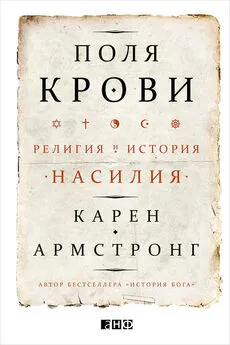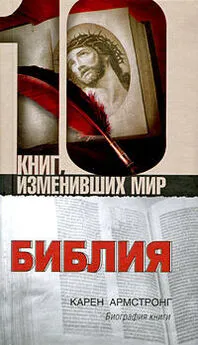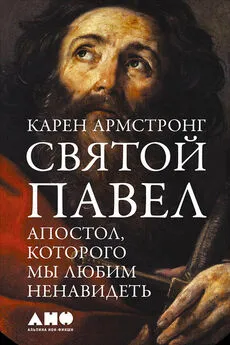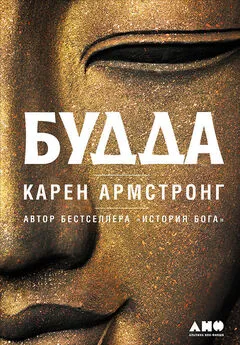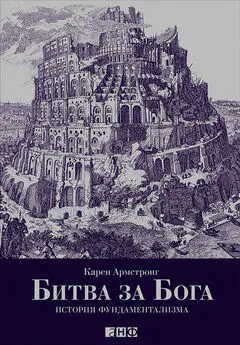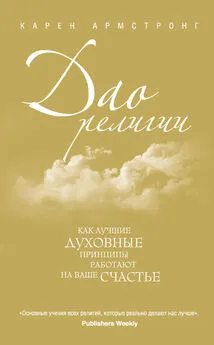Карен Армстронг - Поля крови. Религия и история насилия
- Название:Поля крови. Религия и история насилия
- Автор:
- Жанр:
- Издательство:Array Литагент «Альпина»
- Год:2016
- Город:Москва
- ISBN:978-5-9614-4082-9
- Рейтинг:
- Избранное:Добавить в избранное
-
Отзывы:
-
Ваша оценка:
Карен Армстронг - Поля крови. Религия и история насилия краткое содержание
Поля крови. Религия и история насилия - читать онлайн бесплатно ознакомительный отрывок
Интервал:
Закладка:
113
Veblen, Theory of the Leisure Class , p. 45
114
Bruce Lincoln, ‘Indo-European Religions: An Introduction’, in Death, War and Sacrifice: Studies in Ideology and Practice (Chicago and London, 1991), pp. 1–10
115
Mary Boyce, ‘Priests, Cattle and Men’, Bulletin of the School of Oriental and African Studies , 1988, pp. 508–26.
116
См., напр., зороастрийский богослужебный текст Ясна 30:7c; 32; 49: 4b; 50: 7a; 30: 106; 44: 4d; 51:96; Bruce Lincoln, ‘Warriors and Non-Herdsmen: A Response to Mary Boyce’, in Death, War and Sacrifice , pp. 147–60
117
Lincoln, ‘Indo-European Religions’, pp. 10–13
118
Ibid., p. 12
119
Bruce Lincoln, ‘War and Warriors: An Overview’, in Death, War and Sacrifice , pp. 138–40
120
Гомер, Илиада XII 310–315. см.: английский перевод: Richard Lattimore, The Iliad of Homer (Chicago and London, 1951). [Перевод Н. Гнедича. Здесь и далее цит. по: Гомер. Илиада. – М.: Правда, 1984. – Прим. пер .]
121
Lincoln, ‘War and Warriors’, p. 143
122
Georges Dumézil, The Destiny of the Warrior , trans. Alf Hiltebeitel (Chicago and London, 1969), pp. 64–74
123
Илиада ХХ 490–494
124
Илиада ХХ: 495–503; Seth L. Schein, The Mortal Hero: An Introduction to Homer’s Iliad (Berkeley, Los Angeles and London), pp. 145–46
125
Lincoln, ‘Indo-European Religions’, p. 4
126
Dumézil, Destiny of the Warrior , pp. 106–07
127
Илиада IV 482–488
128
Одиссея XI 488–491. см.: английский перевод в: Walter Shewring, Homer: The Odyssey (Oxford and New York, 1980). [Перевод В. Жуковского. Цит. по: Гомер. Илиада, Одиссея . – М.: Художественная литература, 1967. – Прим. пер .]
129
James Mellaart, The Neolithic of the Near East (London, 1975), pp. 119, 167, 206–07; O’Connell, Ride of Second Horseman , pp. 74–81
130
J. N. Postgate, Early Mesopotamia: Society and Economy at the Dawn of History (London, 1992), p. 251.
131
O’Connell, Ride of Second Horseman , pp. 132–42
132
Keegan, History of Warfare , pp. 130–31
133
John Romer, People of the Nile: Everyday Life in Ancient Egypt (New York, 1982), p. 115
134
Keegan, History of Warfare , pp. 133–35
135
Yigal Yadin, The Art of Warfare in Biblical Lands , 2 vols (New York, 1963), I, pp. 134–35; Robert Adams, The Evolution of Urban Society: Early Mesopotamia and Prehispanic Mexico (Chicago, 1966), p. 149
136
Kramer, Sumerian Mythology , p. 123
137
Ibid., p. 120
138
Kautsky, Politics of Aristocratic Empires , p. 108; ср. Carlo M. Cipolla, Before the Industrial Revolution: European Society and Economy, 1000–1700 (New York, 1976), pp. 129–30, 151
139
Robert L. O’Connell, Of Arms and Men: A History of War: Weapons and Aggression (New York, p. 38); Ride of Second Horseman , pp. 100–01; William H. McNeill, The Pursuit of Power: Technology, Armed Force and Society since AD 1000 (Chicago, 1982), pp. 2–3; Schneider, Ancient Mesopotamian Religion , pp. 22–23; A. L. Oppenheim, Ancient Mesopotamia , pp. 153–54; Gwendolyn Leick, Mesopotamia: The Invention of the City (London, 2001), pp. 85–108
140
Joseph A. Schumpeter, Imperialism and Social Classes: Two Essays (New York, 1955), p. 25: Perry Anderson, Lineages of the Absolutist State (London, 1974), p. 32. (Андерсон П. Родословная абсолютистского государства. – М.: Территория будущего, 2010.)
141
Anderson, Lineages , p. 31
142
Kautsky, Politics of Aristocratic Empires , pp. 148–52
143
Marc Bloch, Feudal Society (Chicago, 1961), p. 298. (Блок М. Феодальное общество. – М.: Издательство имени Сабашниковых, 2003.)
144
Leick, Mesopotamia , p. 95. Морем «наверху» и морем «внизу» названы соответственно Средиземное море и Персидский залив
145
Ibid., p. 100
146
Кодекс Хаммурапи , введение. См. J. B. Pritchard, ed., Ancient Near Eastern Texts Relating to the Old Testament (Princeton, 1969), p. 164. [Цит. по : Хрестоматия по истории Древнего Востока . Ч. I / Под ред. М. А. Коростовцева, И. С. Кацнельсона, В. И. Кузищина. – М.: Высшая школа, 1980. – Прим. пер .]
147
См. F. C. Frensham, Social Justice in Ancient Israel and in the Ancient Near East (Minneapolis, 1995), p. 193
148
Кодекс Хаммурапи , заключение; выделено мной. см.: Pritchard, Ancient Near Eastern Texts , p. 178
149
Marshall G. S. Hodgson, The Venture of Islam: Conscience and History in a World Civilization (Chicago and London, 1974), 3 vols, 1, pp. 108–10
150
Schneider , Ancient Mesopotamian Religion , pp. 105–06. Смысл и этимология слова «Акиту» не известны; Jacobsen, ‘Cosmos as State’, p. 169
151
N. K. Sanders, ed. and trans., ‘The Babylonian Creation Hymn’, in Poems of Heaven and Hell from Ancient Mesopotamia (London, 1971), pp. 44–60
152
Jonathan Z. Smith, ‘A Pearl of Great Price and a Cargo of Yams: A Study in Situational Incongruity’, in Jonathan Z. Smith, Imagining Religion: From Babylon to Jonestown (Chicago and London, 1982), pp. 90–96; Mircea Eliade, A History of Religious Ideas , trans. Willard R. Trask, 3 vols, (Chicago, 1978), 1, pp. 72–76; Sanders, ‘Babylonian Creation Hymn’, pp. 47–51
153
Smith, ‘Pearl of Great Price’, p. 91
154
Sanders, ‘Babylonian Creation’, p. 73. [Перевод. В. Афанасьевой. Цит. по: Я открою тебе сокровенное слово… – М.: Художественная литература, 1981. – Прим. пер .]
155
Ibid.
156
Ibid., p. 79
157
O’Connell, Ride of Second Horseman , pp. 141–42
158
Leick, Mesopotamia , pp. 198–216
159
A. K. Grayson, Assyrian Royal Inscriptions , 2 vols (Wiesbaden, 1972, 1976), 1, pp. 80–81
160
H. W. F. Saggs, The Might That Was Assyria (London, 1984), pp. 48–49; Дьяконов И. // Ancient Mesopotamia: Socio-economic history: A collection of studies by Soviet scholars. – Moscow, 1969, pp. 221–22
161
Grayson, Assyrian Royal Inscriptions , pp. 123–24
162
Saggs, Might That Was Assyria , p. 62
163
Ibid., p. 61
164
Песнь о невинном страдальце , 76. см.: Jacobsen, ‘Cosmos as State’, pp. 212–14. [Перевод В. Шилейко. Цит. по: Ассиро-вавилонский эпос / Сост. В. В. Емельянов. – СПб.: Наука, 2007. – Прим пер .]
165
Ясна 46. Norman Cohn, Cosmos, Chaos and the World to Come: The Ancient Roots of Apocalyptic Faith (New Haven and London, 1993), p. 77; Mary Boyce, Zoroastrians: Their Religious Beliefs and Practices , 2nd ed. (London and New York), p. xliii (Бойс М. Зороастрийцы. Верования и обычаи. – М.: Наука, 1987.); Peter Clark, Zoroastrians: An Introduction to an Ancient Faith (Brighton and Portland, Oreg., 1998), p. 19
166
Ясна 30
167
Boyce, Zoroastrians , pp. 23–24
168
Lincoln, ‘Warriors and Non-Herdsmen’, p. 153
169
Ясна 44
170
Lincoln, ‘Warriors and Non-Herdsmen’, p. 158
171
Jarrod L. Whitaker, Strong Arms and Drinking Strength: Masculinity, Violence and the Body in Ancient India (Oxford, 2011), pp. 152–53
172
Ригведа , III 32: 1–4, 9–11. см.: английский перевод: Ralph T. Griffith, The Rig Veda (London, 1992). [Перевод Т. Елизаренковой. Цит. по: Ригведа. Мандалы I–IV . – М.: Наука, 1999. – Прим. пер .]
173
Edwin Bryant, The Quest for the Origins of Vedic Culture: The Indo-Aryan Debate (Oxford and New York, 2001); Colin Renfrew, The Puzzle of Indo-European Origins (London, 1987); Romila Thapar, Early India: From the Origins to AD 1300 (Berkeley and Los Angeles, 2002), pp. 105–07
174
Whitaker, Strong Arms , pp. 3–5; Wendy Doniger, The Hindus: An Alternative History (Oxford, 2009), pp. 111–13.
175
Louis Renou, Religions of Ancient India (London, 1953), p. 20; Michael Witzel, ‘Vedas and Upanishads’, in Gavin Flood, ed., Blackwell Companion to Hinduism (Oxford, 2003), pp. 70–71; J. C. Heesterman, ‘Ritual, Revelation and the Axial Age’, in S. N. Eisenstadt, ed., The Origins and Diversity of Axial Age Civilizations (Albany, NY, 1986), p. 398
176
J. C. Heesterman, ‘Ritual, Revelation and the Axial Age’, pp. 396–98; Heesterman, The Inner Conflict of Tradition: Essays on Indian Ritual, Kingship and Society (Chicago and London, 1985), p. 206; John Keay, India: A History (London, 2000), pp. 31–33; Thapar, Early India , pp. 126–30
Читать дальшеИнтервал:
Закладка:
